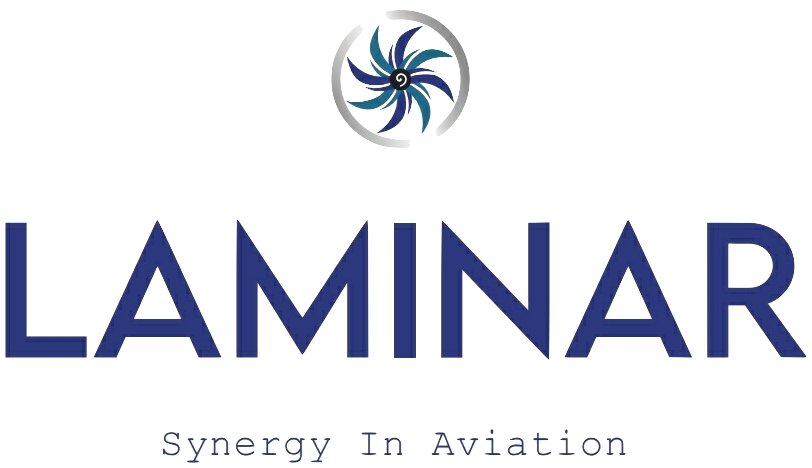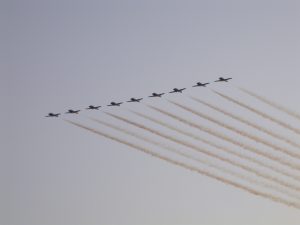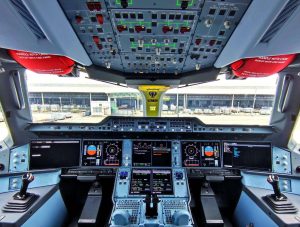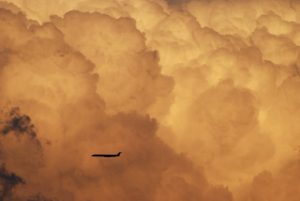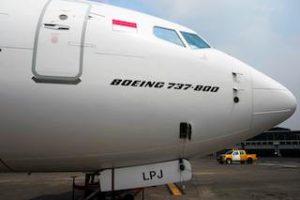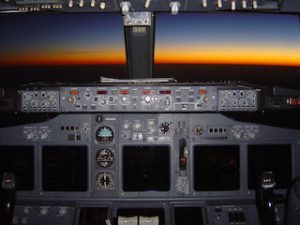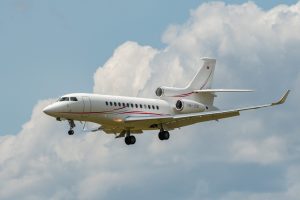Exploring Commercial Airline Pilot USA Jobs
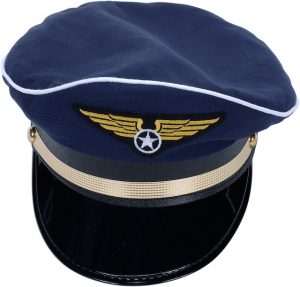 Airline pilot USA jobs attract many people who seek adventure, stability, and purpose. These jobs offer daily excitement and structure. Each flight presents new locations, views, and challenges. Pilots in the United States follow high training standards. Every flight builds experience and skill that leads to career growth.
Airline pilot USA jobs attract many people who seek adventure, stability, and purpose. These jobs offer daily excitement and structure. Each flight presents new locations, views, and challenges. Pilots in the United States follow high training standards. Every flight builds experience and skill that leads to career growth.
Training requirements for airline pilot USA jobs
The initial step in USA jobs starts with earning a private pilot certificate. This requires ground school and flying with a certified instructor. Afterward, students train for an instrument rating. This helps pilots fly safely through clouds and bad weather. Next, they gain a commercial pilot certificate to fly for pay.
Flight hours and certification
Airline pilot USA jobs require many hours in the air. Most pilots log 1,500 hours before applying. These hours come from flight instructing or regional flying. Each hour improves skill and confidence. With enough hours, pilots apply for the Airline Transport Pilot certificate.
Medical and background checks
All pilots in the United States need a current medical certificate. Doctors check eyesight, hearing, and health. Background checks ensure clean records. Safety remains a top concern in aviation. Pilots must meet high physical and personal standards every year.
Regional airlines offer great entry points
Regional airlines hire new pilots with lower hours. These jobs help build flight experience quickly. Pilots fly smaller jets across shorter routes. This gives them real-world training in diverse weather and airspace. Regional airlines also offer clear paths to larger carriers.
National carriers provide long-term growth
Larger airlines hire pilots with regional or military backgrounds. These include well-known names like Delta and American Airlines. Pilots at these carriers earn higher pay and fly larger jets. With time, they gain access to international routes and newer aircraft.
Military experience helps build skills
Many airline pilots come from the military. These pilots bring advanced flight training and discipline. Airlines value that experience. Veterans often transition into civilian cockpits quickly. Military service also prepares pilots for high-pressure decisions and complex operations.
Daily tasks for airline pilots
Pilots begin each day with a preflight briefing. They check weather, fuel, and routes. Communication with air traffic control happens throughout each flight. Pilots monitor systems, adjust settings, and manage the flight path. After landing, they record data and prepare for the next flight.
Schedules can vary each week
Airline pilot USA jobs offer flexible schedules. Some pilots fly 4 days on and 3 days off. Others fly longer trips with more rest afterward. Flight time rules limit hours each month. These rules protect rest time and safety standards.
Pay increases with time and type
Pilot pay rises with experience and aircraft size. Regional pilots start at lower rates. Pay increases at national carriers with each promotion. First officers earn less than captains. Captains make more due to greater responsibility. International flights often bring higher wages and more travel time.
Pilot unions provide support
Most pilots join unions that protect their rights. These unions help with pay talks and work conditions. They also provide legal help and job security. Strong contracts keep pilots protected from unfair treatment or schedule changes. Union support makes a big difference.
Retirement and benefits add value
Airline pilot USA jobs include good retirement plans. These include 401 matching and pension programs. Health insurance, dental, and paid leave also form part of the package. Benefits support long-term stability. Many pilots stay in the career for decades because of these options.
Airports and locations matter
Pilots usually live near their base airport. Living close reduces commuting time. Some pilots move cities for better airline schedules. Larger cities offer more airline bases and routes. Pilots often request transfers to preferred locations over time.
Growth in pilot hiring continues
Air travel demand continues to grow across the United States. Retirements also open new pilot jobs each year. Airlines respond by expanding fleets and training programs. Many airlines host career fairs and interviews nationwide. More students now begin pilot training to meet this need.
Flight schools help prepare for jobs
Flight schools offer step-by-step training for new pilots. These schools range from local fields to large aviation academies. Students train in both classroom and flight settings. Each program builds skill, confidence, and technical knowledge. Flight schools also help connect students with future employers.
Mentorship supports new pilots
New pilots often find mentors in flight schools or airlines. Mentors answer questions and share real experiences. They also help with resumes and interview tips. These connections help build strong career foundations. Mentorship leads to fewer mistakes and better learning curves.
Technology improves pilot training
Flight simulators offer safe training for new situations. These systems prepare pilots for weather and emergencies. Virtual reality adds deeper training experiences. Pilots now learn faster with less risk. Technology also supports better performance tracking and progress checks.
Communication and teamwork build trust
Pilots must work well with each other and with cabin crew. They speak clearly using aviation phrases. Each pilot listens carefully and responds quickly. Good teamwork keeps flights safe and smooth. Trust between crew members improves passenger experience and safety.
Regulations keep standards high
The Federal Aviation Administration sets clear pilot rules. These include flight hour limits and rest breaks. Pilots also renew certificates through regular check rides. These tests include both flight skills and knowledge exams. Each rule protects passengers, crew, and airspace.
Weather impacts each flight
Pilots plan around changing weather each day. Rain, wind, and snow require careful planning. Weather tools help predict flight conditions. Pilots adjust routes to avoid danger. Good weather skills make flights safer and more reliable.
Aircraft systems require focus
Pilots learn many systems inside each aircraft. These include engines, hydraulics, and fuel flow. Pilots check system updates during each flight. If issues arise, pilots follow checklists and procedures. Knowledge of these systems keeps flights safe and smooth.
Continuing education keeps pilots sharp
Pilots study even after getting hired. They attend yearly classes and training updates. These keep skills current with new rules and tech. Airlines test pilots on systems and procedures often. This lifelong learning supports safe flying careers.
Job openings appear on many platforms
Airlines post jobs on career pages and job boards. Pilot websites list hiring news and events. Recruiters attend air shows and schools to meet talent. Social media pages also share openings and interviews. Staying connected helps pilots find the best offers.
Interview process has many steps
Airline interviews test knowledge, communication, and problem-solving. Simulators show flying skills in real time. Panels ask behavior and teamwork questions. Pilots dress sharp and bring all records. Good preparation leads to stronger chances of success.
Document collection matters
Pilots need to track flight logs, certificates, and medicals. Airlines ask for these during hiring. Clean, updated documents show readiness. Digital logbooks help with easy tracking and reporting. Organised records help pilots apply faster and smarter.
Networking brings hidden jobs
Many pilots find jobs through word of mouth. Flight schools and instructors share leads often. Attending events builds strong networks. These connections sometimes lead to interviews that do not appear online. Building trust with peers opens more job paths.
Choosing a path that matches goals
Some pilots prefer regional travel with more days at home. Others want global flights with long hauls. Each airline offers different aircraft and routes. Pilots think about pay, schedule, and lifestyle when choosing. Matching values leads to better job satisfaction.
Making the jump from regional to major
After time at a regional airline, many pilots switch to majors. They gain hours, skills, and recommendations. Major carriers look for clean safety records and leadership. Each step builds toward this move. Timing and performance influence career progress.
Family life adjusts around flying
Pilot families adapt to changing schedules. Some weeks have early mornings or overnight flights. Communication helps balance time at home. Airlines offer schedule bids to help with family planning. Many pilots enjoy longer breaks between trips.
Opportunities beyond flying
Some pilots later move into training or dispatch. Others work in safety or operations at airlines. Their experience supports new areas within aviation. These options add long-term variety and value. Airline pilot USA jobs offer many paths forward.
Satisfaction in flight
Flying brings pride and purpose each day. Pilots guide passengers across states and countries. They view sunrises above clouds and meet new crews often. Each landing brings a sense of success. Many stay in flying careers for life.
Trusted hands in the sky
Airline pilot USA jobs give people a chance to grow, serve, and lead. Each flight proves their training and care. These pilots carry lives safely through skies. With calm voices and skilled hands, they keep America flying.
